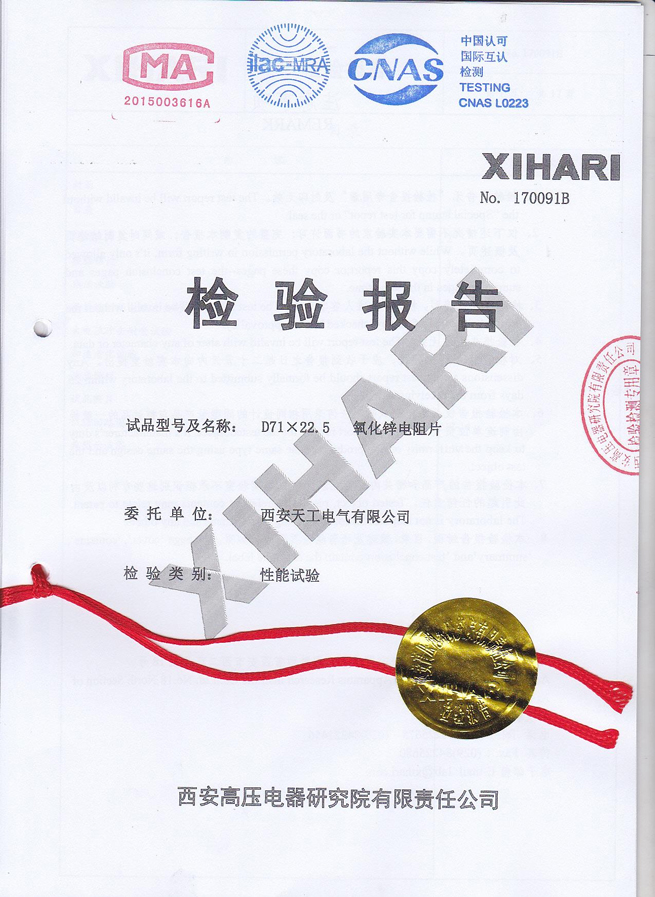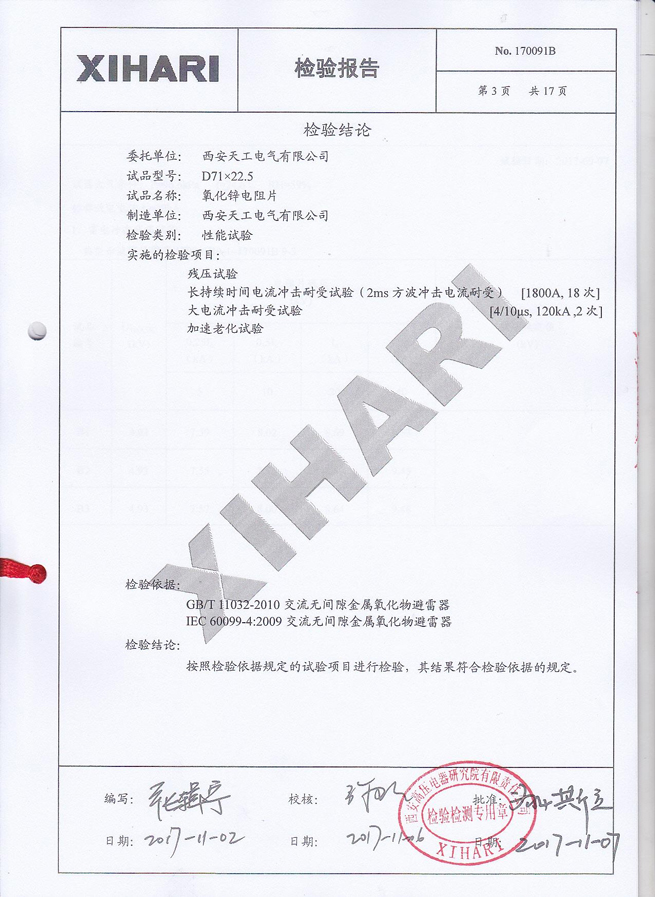In Nov.07.2017 TGE got the new test report of D71H22.5 metal oxide varistors from XIHARI.
Test classification: Performance Test
Tests have been performaned:
Lighting current impluse residual voltage test
High current impulse withstand test(120kA, 2 times)
Long duration current impulse withstand test(2ms, 1800A, 18 times)
Accelerated ageing test
Tests have been performed in accordance with:
GB-11032-2010 Metal oxide surge arresters without gaps for a.c. system
IEC60099-4-2009 Metal oxide surge arresters without gaps for a.c. system
Conclusion:
All the tests above are satisfied the requirements of standards and technical specifications.
With our expertise as a prominent metal oxide varistor manufacturer and surge arrester specialist in China, TGE takes great pride in ensuring that all tests, including the 1800A 2ms withstand test and 120kA 4-10μs high current test, successfully meet the rigorous requirements of industry standards and technical specifications. This commitment to quality and adherence to standards cements our position as a trusted provider of exceptional surge protection solutions.

